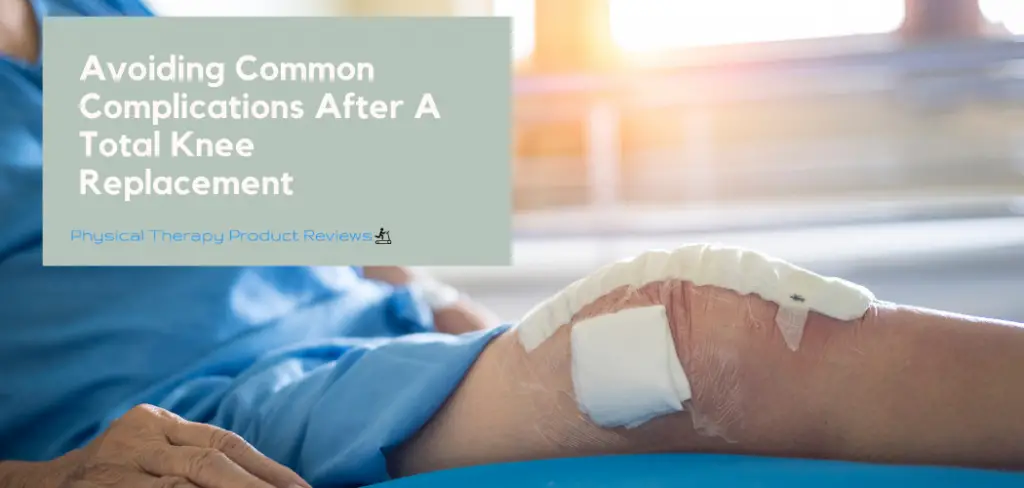All surgeries come with risks, and a total knee replacement is no exception. Being aware of these risks and possible complications before surgery helps you know what to look for post-surgery. The faster you notice any issues, the faster you can get back on the road to recovery.

Allergic Reaction to Adhesives
Approximately 50% of the world’s population has an allergic reaction to the adhesives used in bandage material. You’ve got a 50/50 chance of being one of those people. Keep your eyes open for one or more of the signs.
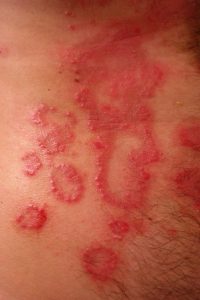
- Blisters
- Cracked/scaly skin
- Itchiness
- Rash
- Redness
If you think you might be having an allergic reaction to the adhesive materials in your bandaging, contact your doctor at once. Your doctor can switch to one of the many hypo-allergenic options. To treat the actual symptoms of the reaction, you may use oral and/or topical antihistamines.
Once the offending material has been removed your ‘reaction’ will subside quickly. It’s important to call the doctor for their recommendations on what you should use. You don’t want to put any creams/ointments directly in your wound that could promptly irritate or infect the incision area.
Blood Clots (DVT) After a Knee Replacement
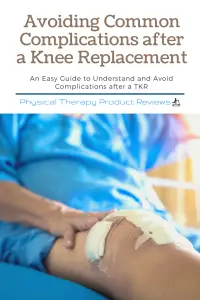 Deep Vein Thrombosis (DVT) is caused when a blood clot forms deep in the veins of your body, most commonly in the legs. Blood clots can break free and travel to your lungs, causing a pulmonary embolism which can be fatal if it blocks the flow of blood.
Deep Vein Thrombosis (DVT) is caused when a blood clot forms deep in the veins of your body, most commonly in the legs. Blood clots can break free and travel to your lungs, causing a pulmonary embolism which can be fatal if it blocks the flow of blood.
Blood clots can happen after any procedure or surgery; however, they are more of a risk when having anything done from the abdomen down. The best way to prevent a blood clot from forming is to stay moving. Push through discomfort and keep your legs, knees, and ankles in motion.
How to Reduce Your Risk of Blood Clots
Get up and move around at least every 30 minutes if possible to keep blood flowing and circulation pumping. The more stagnant you are, the greater the risk of developing DVT.
Perform ankle pumps hourly to use the muscles of the calf and lower leg to help circulate blood. This is perfect to do if you are in a situation such as on an airplane or car ride where you can’t stand up and move around.
Another way to help prevent DVT is by wearing compression stockings. In many cases, the hospital will send you home with a pair. If not, you can purchase them at any pharmacy or online.
Knee Implant Loosening
Although rare, three are instances when an implant becomes loose. Studies show that only around 2% of people have issues with implants loosening. If you suspect that your implant could be loose contact your doctor immediately.
Your implant may be loosening if you notice:
- Excessive stiffness
- Limping
- Swelling that does not go away.
- The feeling of being unstable.
The following things are common causes for implant loosening:
- A defective implant
- Infection that goes untreated
- Playing sports other physically demanding activities that can put pressure on your joints
Possible Complications of Total Knee Replacement
Infection After Total Knee Surgery
Approximately 1 out of 100 people will experience an infection after having surgery. There are two types of infections to worry about.
The first is called a superficial infection where the skin around the incision becomes infected. This is not uncommon and can typically be treated easily with antibiotics and topical treatments.
If you have a superficial infection that goes untreated it can result in a deep knee infection which is much more serious. A deep knee infection may lead to implant loosening and other complications if not treated in a timely manner.
Certain medical conditions can predispose you to infections as well. It’s always important to discuss any medical conditions you have before surgery so your doctor can take the appropriate precautions to ensure a speedy recovery with the least amount of pain.
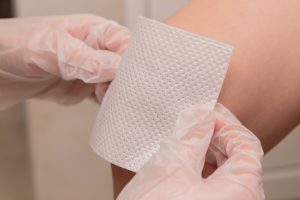
To prevent superficial infections from forming, leave the bandage material on for around 5 – 7 days or until the doctor tells you to remove it. Keep the incision area clean and dry and do not submerge it in water until the wound is fully closed.
Nerve Injury
The central nervous system is fascinating and extremely complex. Everyone has different sensations and reactions to damaged nerves. What one person may experience after a TKR may be different than the next person. Unfortunately, there is not a whole lot that can be done about damaged nerves. The best way to combat damaged nerves is to massage the affected areas, stretch and do your post-operative exercises.
Nerves do heal and regenerate but the process is slow. you may not know how much the nerve injury will heal until 1-2 years after surgery. The best way to help a nerve heal is to use it, so make sure to keep doing your physical therapy exercises after surgery.
Scar Tissue Formation and Stiffness
Scar tissue and stiffness are normal for anyone after having a total knee replacement. To prevent excessive formation of scar tissue and stiffness you need to be diligent about doing your post-operative exercises.
Focus on stretching and strengthening for better knee extension. Also, be sure to move every 30 minutes to prevent stiffening. It is also helpful to gently massage the incision area multiple times per day to help break up the scar tissue for a less noticeable scar.
If you are a back sleeper, try to avoid using a pillow under your knee as this can also cause stiffness and delay healing.
Smoking and Proper Nutrition
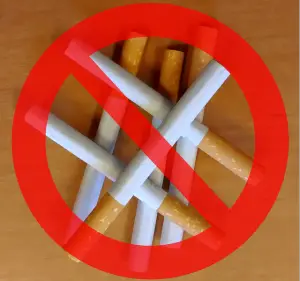
If you have not already done so; QUIT SMOKING, at least until you are recovered. Smoking delays the healing process because it restricts the flow of oxygen through the bloodstream.
Eating a nutritious diet and drinking plenty of water is also highly recommended. The better your overall health the faster you will heal and be able to get back to your regularly scheduled life.
Awareness Causes Fewer Complications
Being aware of possible complications after having a major surgery helps you handle them in a timely fashion. Practicing a healthy lifestyle and following your doctor and physical therapist’s recommendations will reduce the risk of complications and allow you to heal faster.
Sources:
(https://www.webmd.com/dvt/blood-clots-after-surgery),
(https://www.healthline.com/health/allergic-to-bandaids#alternative-wound-coverings),
(https://www.healthline.com/health/knee-replacement-infection),
(https://www.healthline.com/health/knee-replacement-infection#risk-factors),
(https://www.reliasmedia.com/articles/144832-neuropathy-after-total-knee-arthroplasty),
Other Great Rehab Related Articles
How to Stay Active After Cervical Fractures: Expert Tips and Advice
Dealing with Painful Stairs After Ankle Replacement Surgery
Walking After a Total Ankle Replacement: Tips for a Successful Recovery
Exercises While Non-Weight Bearing After Ankle Replacement: Elevation, AROM, Leg Raises, and More
Ankle Pain with Stairs: Causes and Home Treatment Options
5 Common Mistakes You’re Making After an Ankle Sprain
Disclaimer: The information provided in this post is for educational purposes only. This is not a substitute for a medical appointment. Please refer to your physician before starting any exercise program.
